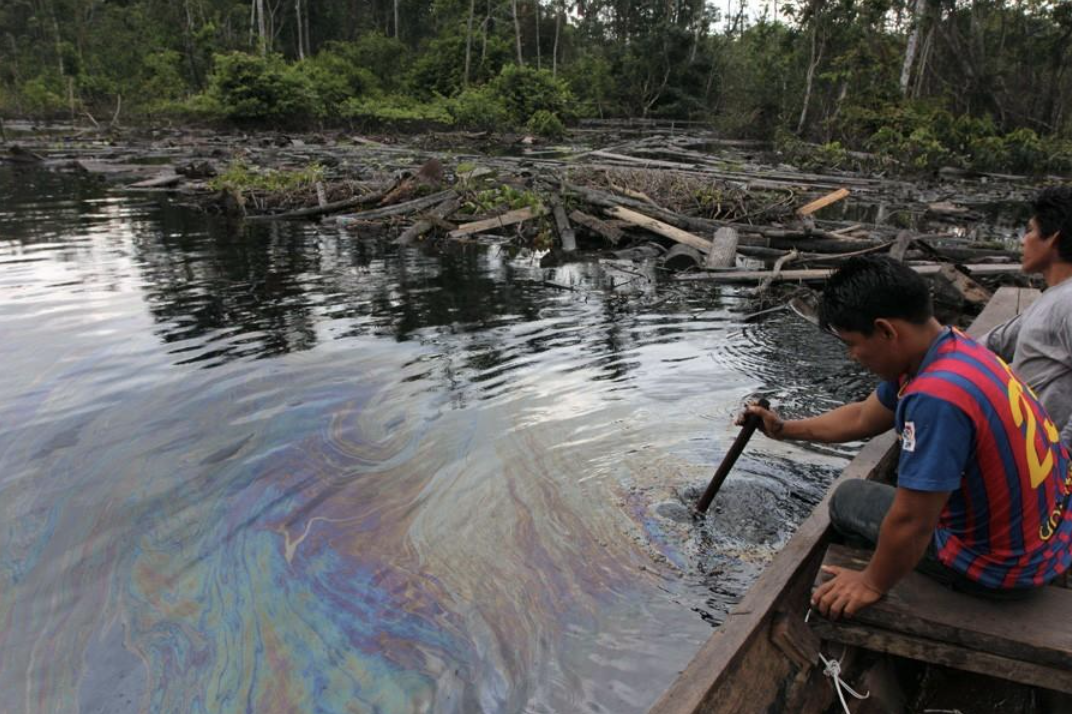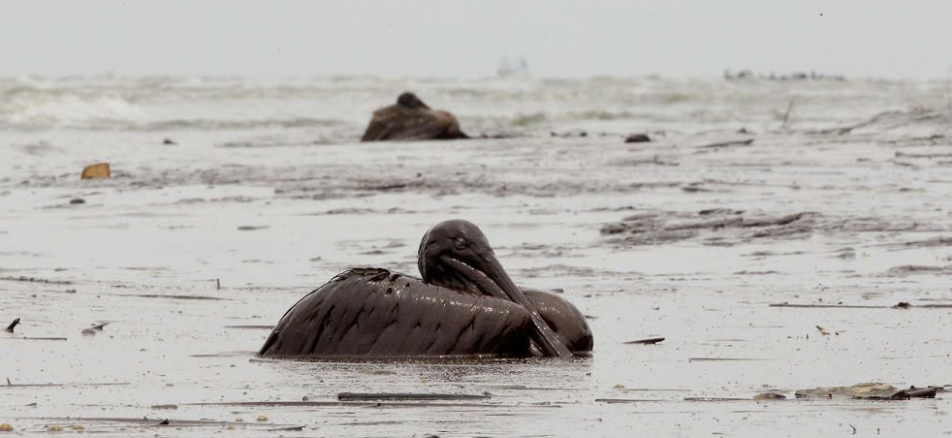Barbara Fraser
Untitled, 2016
This photograph depicts a young boy swirling a stick in a canal contaminated with oil, surrounded by dead tree branches following a large oil spill near the northern Peruvian Amazon in 2014. In the Amazon, large lakes like the one shown are typically the largest source of food and water for Indigenous peoples. Now contaminated with oil, they are forced to travel extensively just to find a cleaner source of food and water, likely placing continual stress on them until either the oil is removed, or they relocate to a cleaner environment. The dead tree branches are likely a result of the oil overflowing onto the soil, slowly killing the nearby vegetation. Both boys in the photograph appear pensive, possibly considering their options for how to survive in or evacuate a dying environment. Label by Sebastian Rios-Melean




